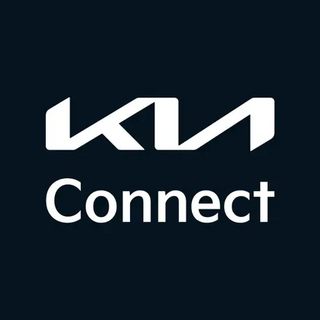Verizon is an American wireless network operator that previously operated as a separate division of Verizon Communications under the name Verizon Wireless. In a 2019 reorganization, Verizon moved the wireless products and services into the divisions Verizon Consumer and Verizon Business, and stopped using the Verizon Wireless name. Verizon has 114.8 million subscribers as of March 31, 2024. It currently has the largest network in the United States with their LTE network covering 70% of the United States.

A hotspot is a physical location where people can obtain Internet access, typically using Wi-Fi technology, via a wireless local-area network (WLAN) using a router connected to an Internet service provider.

OnStar Corporation is a subsidiary of General Motors that provides subscription-based communications, in-vehicle security, emergency services, turn-by-turn navigation, and remote diagnostics systems throughout the United States, Canada, Chile, China, Mexico, Europe, Brazil, Colombia, Argentina and the Gulf Cooperation Council countries.

Wi-Fi calling, also called VoWiFi, refers to mobile phone voice calls and data that are made over IP networks using Wi-Fi, instead of the cell towers provided by cellular networks. Using this feature, compatible handsets are able to route regular cellular calls through a wireless LAN (Wi-Fi) network with broadband Internet, while seamlessly change connections between the two where necessary. This feature makes use of the Generic Access Network (GAN) protocol, also known as Unlicensed Mobile Access (UMA).

Verizon Communications Inc., is an American telecommunications company headquartered in New York City. It is the world's second-largest telecommunications company by revenue and its mobile network is the largest wireless carrier in the United States, with 114.8 million subscribers as of March 31, 2024.
In-car Internet refers to Internet service provided in a car. Internet access can be provided by tethering a mobile phone, or with a mobile hotspot, whether portable or built into the car. Built in systems have existed since 2008 and include:

MiFi is a brand of wireless router that acts as a mobile Wi-Fi hotspot device.

Kia Connect, formerly UVO eServices, is a paid subscription OEM infotainment and telematics service offered by Kia Motors America on select vehicles for the United States market. The system allows users to make hands-free calls on their smartphone, stream music, navigate to a POI, and perform vehicle diagnostics with the use of voice commands.

Toyota Entune is an integrated multimedia navigation and telematics system for Toyota automobiles that provides satellite-based information on traffic, weather, sports scores, stocks, and fuel prices via subscription through SiriusXM. When connected to a compatible cellular phone running the Entune app via radio or USB cable, the system provided a browser and other apps including those from music services such as iHeartRadio, Pandora and XM Satellite Radio. The cell phone app supported iOS, Android, and Blackberry with different versions utilizing cell data. The system could be controlled with (limited) speech recognition, and optionally include the “Safety Connect” personalization system.
A connected car is a car that can communicate bidirectionally with other systems outside of the car. This connectivity can be used to provide services to passengers or to support or enhance self-driving functionality. For safety-critical applications, it is anticipated that cars will also be connected using dedicated short-range communications (DSRC) or cellular radios, operating in the FCC-granted 5.9 GHz band with very low latency.
Connectify is an American software company that develops networking software for consumers, professionals and companies. Connectify Hotspot is a virtual router software for Microsoft Windows, and Speedify is a mobile VPN service with channel bonding capabilities available for individuals, families and teams.
LocationSmart, originally called TechnoCom Location Platform, is a location-as-a-service (LaaS) company based in Carlsbad, California, that provides location APIs to enterprises and operates a secure, cloud-based and privacy-protected platform. In February 2015, it acquired a competitor, Locaid.

LIFX is a line of energy-efficient, multi-color, Wi-Fi enabled, digital addressable LED light bulbs that can be controlled via a Wi-Fi equipped device such as a smartphone or smartwatch.
LTE in unlicensed spectrum is an extension of the Long-Term Evolution (LTE) wireless standard that allows cellular network operators to offload some of their data traffic by accessing the unlicensed 5 GHz frequency band. LTE-Unlicensed is a proposal, originally developed by Qualcomm, for the use of the 4G LTE radio communications technology in unlicensed spectrum, such as the 5 GHz band used by 802.11a and 802.11ac compliant Wi-Fi equipment. It would serve as an alternative to carrier-owned Wi-Fi hotspots. Currently, there are a number of variants of LTE operation in the unlicensed band, namely LTE-U, License Assisted Access (LAA), MulteFire, sXGP and CBRS.
Veniam was a technology startup focused on building large WiFi mesh networks using moving vehicles like city buses or taxis. The company is headquartered in Mountain View, California and was founded in 2012. The Company received 4.9 million dollars in 2014 in a funding round from True Ventures, USV and Cane Investments. Veniam's technology is being used in Porto's city buses with about 230,000 users with onboard units (OBUs) installed on over 600 buses, taxis and garbage trucks. They aim to equip many moving things with wireless hotspots creating a mesh that could be used to build sensors to turn the city smarter.Each vehicle is equipped with a NetRider, a multi network unit with Wi-Fi (802.11p), DSRC, GPS and 4G/LTE connectivity. Veniam was acquired by Nexar in 2022.
Whistle Labs Inc. is a subsidiary of Mars Petcare headquartered in San Francisco, California. It produces and markets the Whistle GPS Pet Tracker, a device worn on a pet's collar that monitors its activity and location. In addition to pet owners, the devices have been used by veterinary researchers.

Link Motion is an automotive software and hardware company developing embedded automotive systems that have been used in the Lamborghini Huracán. Their main product is the Motion T carputer which can implement a connected vehicle gateway as a separate unit or as a part of the cockpit solution (eCockpit). The Motion T carputer runs on NXP's i.MX8 multi-OS platform, supports four in-car HD displays and hosts connectivity features on Microsoft’s connected vehicle platform, a set of services built on the Microsoft Azure cloud, such as over-the-air software and firmware updates, telemetry and diagnostics data and secure remote access.
Google Station was a Google service that allowed partners to roll out Wi-Fi hotspots in public places by providing software and advice on hardware to turn fiber connections into Wi-Fi. It was only implemented in India and Indonesia but in March 2018, the service was launched in Mexico. In February 2020, Google announced the service would be discontinued. The service went offline on September 30, 2020.
Xiaomi Smart Home Products are products released by third-party manufacturers who have partnered with Xiaomi. These products are managed by Xiaomi Home app.

iOS 14 is the fourteenth major release of the iOS mobile operating system developed by Apple for the iPhone and iPod touch lines. Announced at the company's Worldwide Developers Conference on June 22, 2020 as the successor to iOS 13, it was released to the public on September 16, 2020. It was succeeded by iOS 15 on September 20, 2021.









